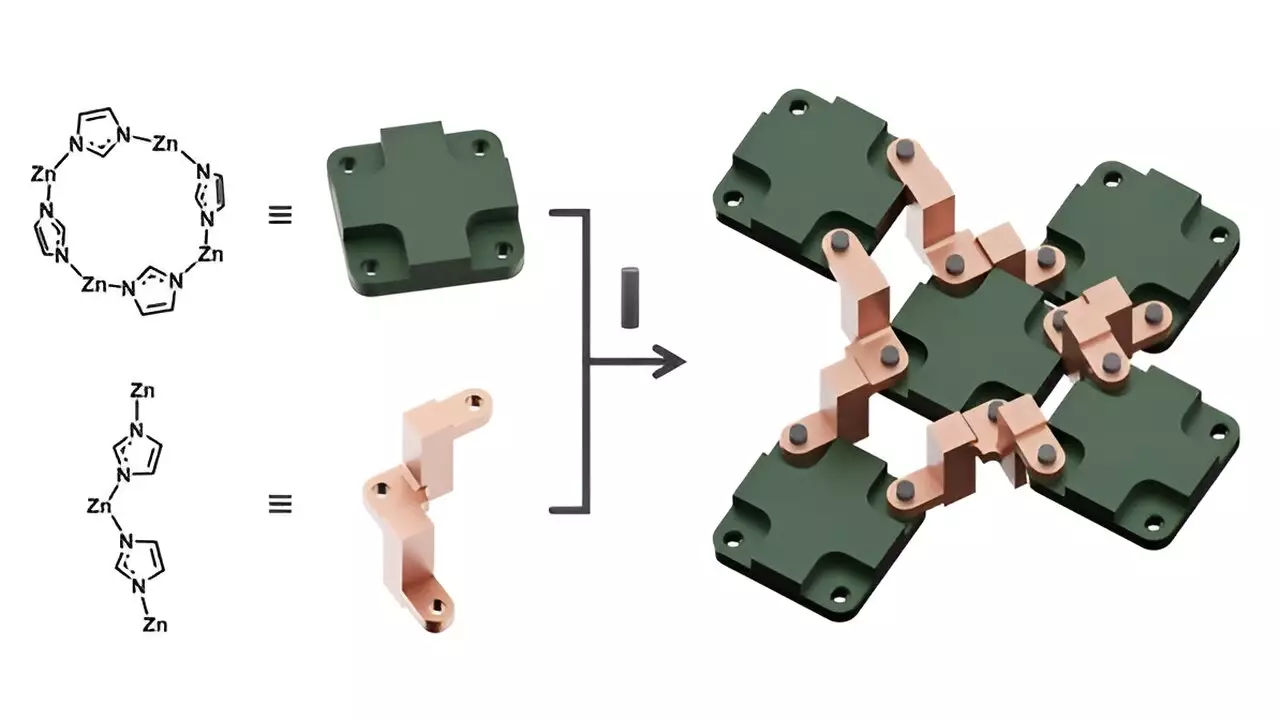The field of molecular engineering is witnessing a paradigm shift, transcending the boundaries of conventional mechanical systems. Scientists are exploring the potential of sophisticated molecular-scale devices designed to perform intricate tasks akin to those of traditional machinery. Researchers from the Ulsan National Institute of Science and Technology (UNIST) have spearheaded this effort, unveiling a series of zeolitic imidazolate frameworks (ZIFs) that offer groundbreaking capabilities in nanoscale mechanical motion. This innovative research, led by Professor Wonyoung Choe, promises not only to enhance our understanding of molecular mechanics but also to propel forward the applications of nanotechnology, particularly in data storage and materials science.
Molecular Scale Mechanics: A Step Toward Practical Applications
The ability to control motion at the molecular level has long been an elusive goal within the scientific community. While traditional machines operate based on macroscopic principles, molecular devices like ZIFs incorporate features that imitate these physical principles on a smaller scale. By utilizing metal-organic frameworks (MOFs) as foundational structures, Choe and his team have effectively integrated dynamic components capable of executing mechanical movements within a solid state. This approach not only opens exciting new possibilities for applications but also signals a significant advancement in the interplay between molecular architecture and mechanical functionality.
The research highlights one of the transformative approaches to engineering these mechanisms, which involves using SLIDER-CRANK linkages. These structures facilitate the conversion of rotational movement into linear motion, driven by environmental factors such as temperature fluctuations and solvent interactions. The ability to manipulate such mechanical responses is a game-changer, making it possible to develop devices that can adapt in real-time to their surroundings.
Exceeding Expectations with Enhanced Properties
One of the most impressive outcomes of this research is the remarkable elasticity and flexibility displayed by the newly developed ZIFs. These properties represent a significant enhancement over previously established frameworks and position them as ideal candidates for future technological innovations. The uniqueness of various ZIFs lies in their mechanical linkage structures; two systems composed of the same metal nodes and organic ligands can exhibit markedly different levels of flexibility depending on their interconnections. This insight is critical in the design of molecular machines that must be versatile enough to perform various tasks, reflecting the need for component assembly in the pursuit of specific mechanical outcomes.
Professor Choe emphasizes that this research extends beyond the laboratory’s confines and into real-world applications. The capacity to implement machine-like functions at the molecular level could unlock new avenues for material development. With this innovative understanding of the relationship between molecular structure and mechanical properties, we can anticipate a future replete with materials that exhibit unparalleled characteristics.
Implications for Future Technologies
The implications of this research extend far beyond mere academic curiosity; they encapsulate the potential for revolutionary advancements across multiple sectors. The ability to engineer responsive, flexible materials at the molecular scale could transform the way we think about data storage solutions, smart materials, and responsive systems. As we move forward, the intersection of chemistry, engineering, and technology will undoubtedly lead to discoveries that redefine our capabilities, enabling us to create ever more sophisticated systems rooted in the molecular framework of ZIFs and beyond.
In essence, the strides made by the UNIST research team represent a foundation for future exploration and exploitation of molecular machines, establishing a new frontier in nanotechnology that could reshape global industries.


Leave a Reply